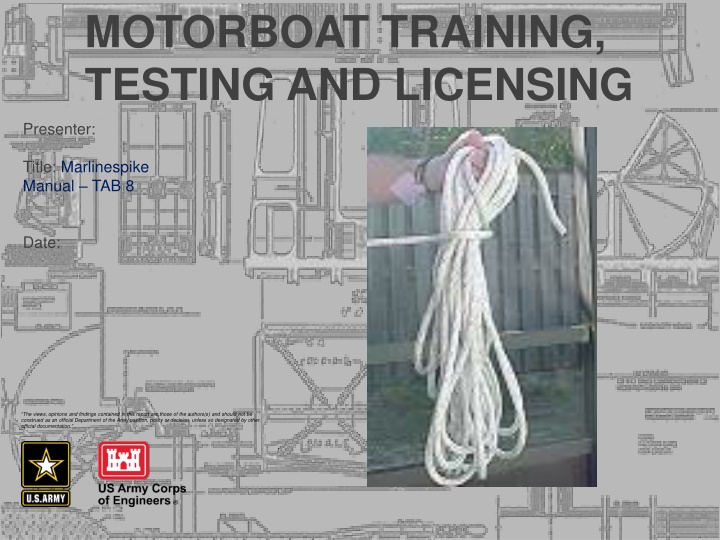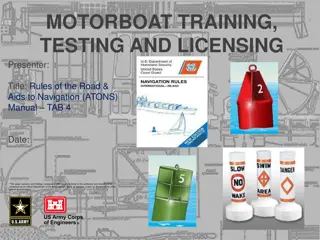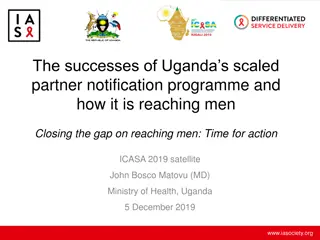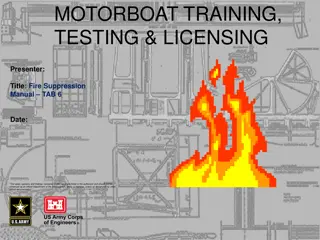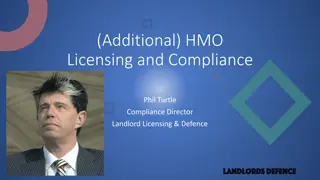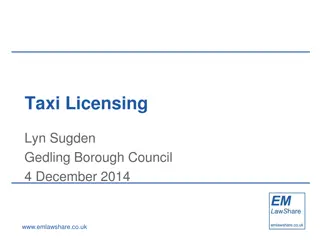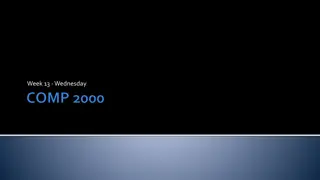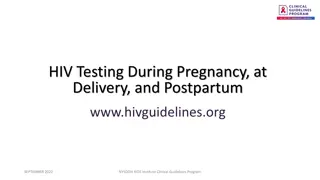Motorboat Training, Testing, and Licensing Presenter Guide
This presenter guide covers essential information on motorboat training, testing, and licensing, including marlinespike seamanship, line care, common types of lines, and important knots to know. The guide emphasizes the importance of understanding proper seamanship techniques, caring for lines, and mastering key knots for safe boating practices.
Download Presentation

Please find below an Image/Link to download the presentation.
The content on the website is provided AS IS for your information and personal use only. It may not be sold, licensed, or shared on other websites without obtaining consent from the author.If you encounter any issues during the download, it is possible that the publisher has removed the file from their server.
You are allowed to download the files provided on this website for personal or commercial use, subject to the condition that they are used lawfully. All files are the property of their respective owners.
The content on the website is provided AS IS for your information and personal use only. It may not be sold, licensed, or shared on other websites without obtaining consent from the author.
E N D
Presentation Transcript
MOTORBOAT TRAINING, TESTING AND LICENSING Presenter: Title: Marlinespike Manual TAB 8 Date: The views, opinions and findings contained in this report are those of the authors(s) and should not be construed as an official Department of the Army position, policy or decision, unless so designated by other official documentation.
2 2 Better to know a knot and not need it, than need a knot and not know it
3 3 Marlinspike Seamanship Objectives: Understand What Marlinspike Seamanship is Proper Way to Care for Line Learn to tie the bowline, cleat wrap and clove hitch knots
4 4 Two ropes walk into a bar, one rope calls the bartender and says Barkeep, let me get a couple of beers. The bartender says I m sorry, we don t serve ropes in here. Frustrated, the ropes walk out and since this was the only bar in town they thought about it until one rope says I ve got an idea! So he gets himself into a bind and frizzles his ends and walks back into the bar and says Barkeep, let me get a beer. The barkeep says Aren t you one of those ropes that came in earlier? The rope answers No sir, I m a frayed knot.
5 Marlinspike Seamanship 5
6 6 The name marlinespike is derived from the tool that is used for splicing. It can be a tapered metal pin or carved of wood. Once a rope is onboard a boat and is given a specific purpose, such as dock line, halyard, etc. it is called a line, not a rope.
7 7 Common types of line Natural Fibers (manila)- not great in salt water and shrinks when wet Nylon - strongest line for its size, stretches up to 40%, can be stored wet Polyester - not as strong and stretchy as nylon, may chaff Polypropylene -floats, least costly, can cut skin , deteriorates in sunlight Wire Rope - very strong, has little stretch, needs to be kept lubricated
8 8 Line Care Keep clean Keep dry Protect from abrasion Whip ends to prevent unraveling
9 Knots to Know Bowline - King of knots Used to fasten your line to a object or just to make a loop in your line that will not slip. 9
10 10 Clove Hitch - Used for quick, temporary post, spar or stake.
11 11 Clove Hitch If you can reach the top of a piling or buoy, an alternative way to tie a clove hitch is to follow the illustrations below and then slip the loop over the piling or buoy and tighten.
12 12 Cleat Wrap Take the line to the ear of the cleat furthest from where the line comes from the load. Take one wrap around the base of the cleat and then figure eight across the top of the opposite ear. Finish with a half hitch turned under so that the line is coming away from the cleat in the opposite direction. More wrappings and hitches are not needed, as they only slow the process of casting off.
13 13 Knots of Interest Square (or Reef) Knot Used to tie together two lines of the same diameter Left over Right Right over Left
14 14 Knots of Interest Sheet Bend (Weaver s Knot) Used to tie together two lines of different diameter
15 15 Knots of Interest Anchor Bend Used to secure a line to an anchor
16 16 Knots of Interest Figure Eight Knot (Flemish Knot) Used as a stopper
17 17 Knots of Interest Overhand Knot Use sparingly as it is difficult to untie after tightening
18 18 Knots of Interest Two Half - Hitches Used most often in mooring
19 19 References: www.animatedknots.com www.netknots.com APPS for your smart phone Our GOOGLE friend (or girlfriend, Alexa)
